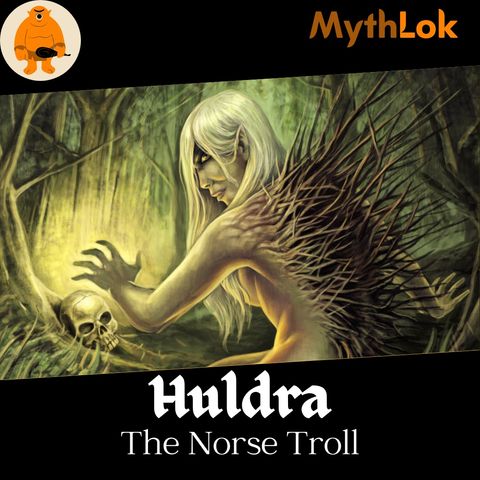Huldra : The Norse Troll

Oct 26, 2022 ·
7m 15s
In Scandinavian and Germanic folklore, the huldra are beautiful creatures that live in seductive forests. Their name, which literally means "covered," is believed to be due to the way they...
show more
In Scandinavian and Germanic folklore, the huldra are beautiful creatures that live in seductive forests. Their name, which literally means "covered," is believed to be due to the way they try to hide their mystical nature. In most folk tales, the huldra were only interested in sex and dancing. Even these stories have unhappy endings as the men would later grow mad because they spent too much time with the Huldra or the Elven people. Most Norse folklore refers to the huldra as a type of "ra," which literally means "nature's keepers."
The havsfru or aquatic sjörå are considered to be the ancestors of the mermaid myth, and they are related to the Huldra. Following the adoption of Christianity in Scandinavia and Germany, a new origin myth about the huldra emerged. It states that God once owned a cottage, but he only had time to wash half of his children. A woman was said to have tried to hide her children, but God saw them and decided that they were not human. The children were then called huldras.
All across Germany and Scandinavia, there is a common belief that the huldra are beautiful blonde women who wander around human settlements. Tall and slender, with long golden hair and a crown made out of flowers, these women are known to appear in front of lone young men. Huldras are different from human women in that they have hollow backs or tails that stick out from their robes or dresses. The hulders try to hide their tail when they are performing their tricks, but in most myths, young men are given the opportunity to react to it.
Huldras who have lost their hollow back and tail would often dance a rune dance. In the mornings, you would often see what looked like a witch circle in the forest or near swamps. These beautiful women were known to live in areas affected by moss, and they were often seen wearing white clothes and blonde hair. They would dance on top of burial mounds during thick mist.
The Danish version of the Huldra is missing its cow tail and hollow back due to the various folk tales that have been told about them. There are only a few places where you can find this characteristic in the lore.
Read more at https://mythlok.com/huldra/
show less
The havsfru or aquatic sjörå are considered to be the ancestors of the mermaid myth, and they are related to the Huldra. Following the adoption of Christianity in Scandinavia and Germany, a new origin myth about the huldra emerged. It states that God once owned a cottage, but he only had time to wash half of his children. A woman was said to have tried to hide her children, but God saw them and decided that they were not human. The children were then called huldras.
All across Germany and Scandinavia, there is a common belief that the huldra are beautiful blonde women who wander around human settlements. Tall and slender, with long golden hair and a crown made out of flowers, these women are known to appear in front of lone young men. Huldras are different from human women in that they have hollow backs or tails that stick out from their robes or dresses. The hulders try to hide their tail when they are performing their tricks, but in most myths, young men are given the opportunity to react to it.
Huldras who have lost their hollow back and tail would often dance a rune dance. In the mornings, you would often see what looked like a witch circle in the forest or near swamps. These beautiful women were known to live in areas affected by moss, and they were often seen wearing white clothes and blonde hair. They would dance on top of burial mounds during thick mist.
The Danish version of the Huldra is missing its cow tail and hollow back due to the various folk tales that have been told about them. There are only a few places where you can find this characteristic in the lore.
Read more at https://mythlok.com/huldra/
Information
| Author | NITTEN NAIR |
| Website | - |
| Tags |
Copyright 2024 - Spreaker Inc. an iHeartMedia Company
